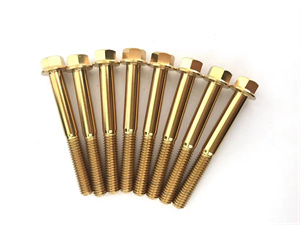Heat Treatment Of Custom Fasteners
The main purpose of tempering Custom Fasteners is to improve their mechanical properties and service life, to meet specific application requirements. The following is a specific explanation of the purpose of Fasteners tempering:
Adjusting mechanical properties:
By tempering treatment, the mechanical properties such as hardness, strength, plasticity, and toughness of fasteners can be adjusted. Different combinations of tempering temperatures and times can achieve different performance combinations to adapt to different usage environments and requirements.
Eliminating internal stress:
During the manufacturing process, fasteners may undergo various cold and hot processing, leading to internal stress. If these internal stresses are not eliminated, they may cause deformation, cracking, and other problems in fasteners during use. Tempering treatment can change the internal structure of fasteners through heating and insulation, thereby eliminating or reducing internal stress and improving the stability and reliability of fasteners.
Stable size:
By tempering treatment, the size of fasteners can be stabilized. During the manufacturing process, the size of fasteners may change due to the thermal expansion and contraction of materials and the deformation generated during processing. Tempering treatment can stabilize the internal structure of fasteners, thereby maintaining their dimensional stability.
Improving corrosion resistance:
Some tempering treatments (such as surface oxidation treatment after low-temperature tempering) can also improve the corrosion resistance of fasteners. By forming a dense oxide film, it can prevent external corrosive media from corroding the fastener and extend its service life.
Improving processing performance:
For some difficult to process fastener materials, tempering treatment can improve their processing performance. For example, improving the cutting performance of materials and reducing the degree of work hardening can reduce machining difficulty and cost.
Meet specific requirements:
In certain special application scenarios, fasteners need to meet specific performance requirements. For example, fasteners working in harsh environments such as high temperature, high pressure, and strong corrosion need to have higher strength, better toughness, and lower internal stress performance. By selecting appropriate tempering process parameters, these special requirements can be met.
